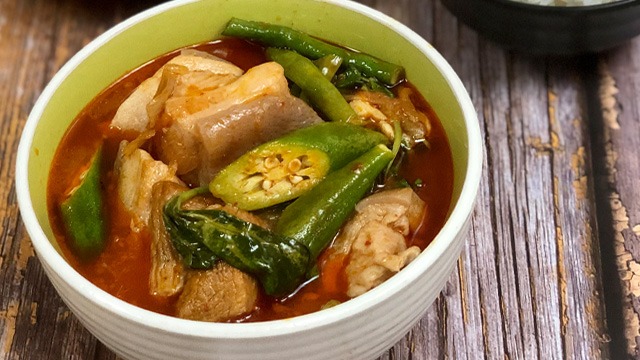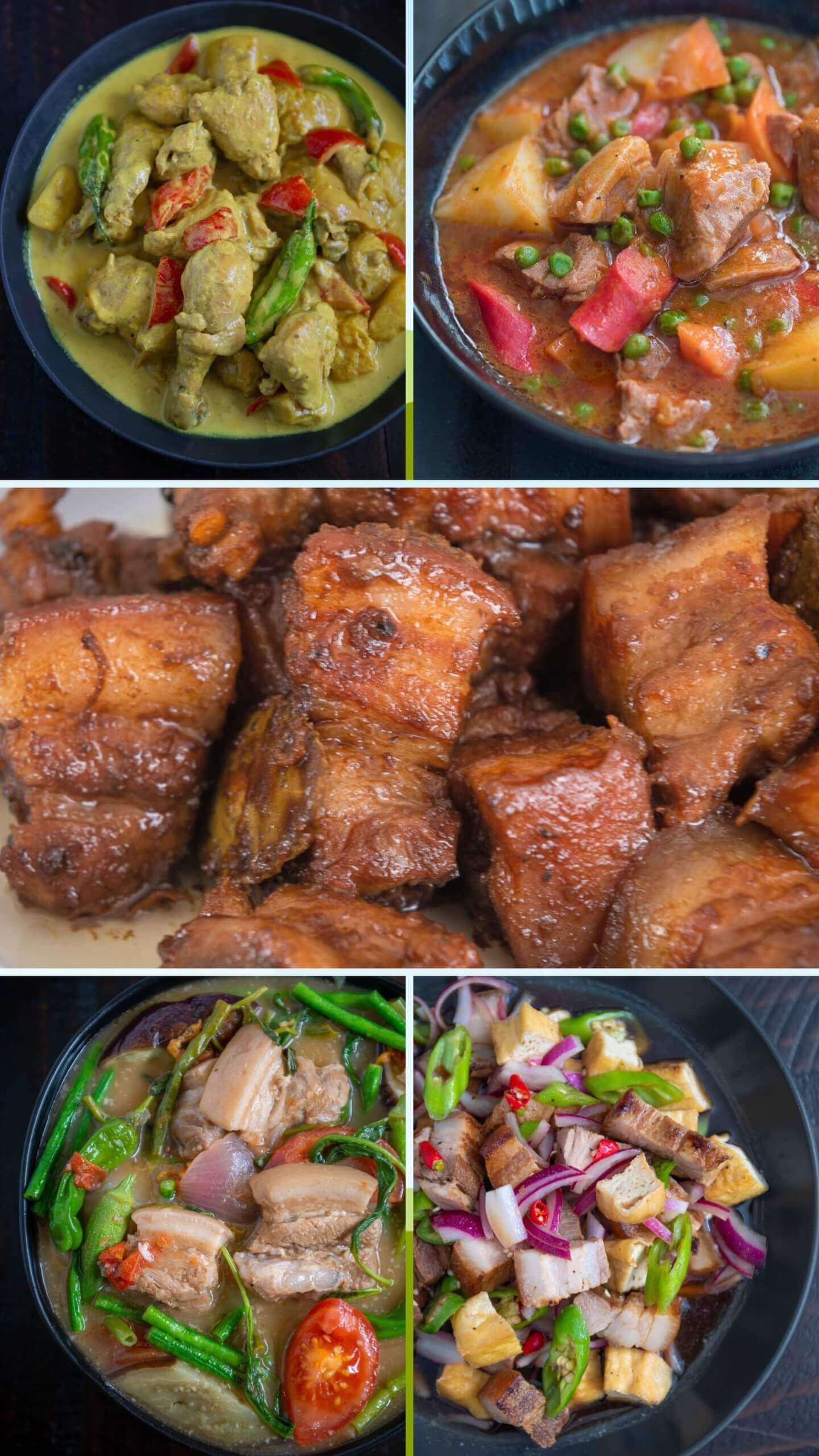Detailed Filipino Food Recipes for Beginners.
Check Out the Rich Preference of Filipino Cuisine With These Must-Try Recipes
Filipino cuisine provides an impressive tapestry of flavors that show the nation's abundant cultural heritage. Each meal tells a tale, from the mouthwatering depth of Adobo to the refreshing tang of Sinigang, welcoming culinary fanatics to discover a varied range of preferences.
Adobo: The Famous Meal
Adobo has actually become the ultimate dish of Filipino cuisine, exciting tastes buds both in your area and abroad. This cherished dish is defined by its unique mix of tasty, sour, and a little pleasant flavors, attained through a thorough marination process. Commonly, adobo is prepared using hen or pork, although variations exist that include seafood and vegetables.
The basic ingredients of adobo include soy sauce, vinegar, garlic, bay leaves, and black pepper, which with each other create a rich and fragrant sauce. The cooking technique typically includes simmering the meat in the sauce, allowing it to take in the facility flavors while ending up being tender. This procedure not only improves the preference yet also acts as an all-natural preservative, making adobo an optimal recipe for storage.
Adobo is commonly offered with steamed rice, which complements its robust taste account. Each area in the Philippines flaunts its own version, showing neighborhood components and culinary customs. This flexibility talks to the dish's cultural importance and sustaining appeal. Whether enjoyed at home or in restaurants, adobo stays a staple that symbolizes the significance of Filipino friendliness, making it a must-try for any person discovering this vibrant cuisine.

Sinigang: A Tangy Pleasure
Another foundation of Filipino food is sinigang, a meal celebrated for its distinct appetizing taste. This full-flavored soup is traditionally made with a range of meats, consisting of pork, beef, shrimp, or fish, and is defined by its sour brew, which normally obtains from tamarind, environment-friendly mango, or calamansi. The balance of acidity and umami creates a rejuvenating contrast that is both calming and invigorating.
Sinigang is typically enriched with a variety of fresh vegetables such as radish, eggplant, water spinach, and string beans, adding not just to the dish's taste profile however additionally to its dietary value - Filipino food recipes. Each family might have its own version, with regional variants that reflect neighborhood ingredients and cultural influences
The preparation of sinigang involves simmering the chosen meat until tender, followed by the enhancement of the souring agent and vegetables. This method allows the flavors to meld magnificently, leading to a passionate and gratifying meal. Commonly served with steamed rice, sinigang personifies the significance of Filipino hospitality and is a precious staple, usually appreciated throughout household gatherings and unique events.
Lechon: The Festive Roast
Lechon, frequently considered the focal point of joyful Filipino celebrations, is a succulent baked pig understood for its crispy skin and tender, tasty meat. This iconic recipe is deeply rooted in Filipino society, typically gracing tables during birthday celebrations, wedding celebrations, and considerable holidays. The preparation of lechon is an art type, requiring meticulous focus to detail, from seasoning the pig with a mix of flavors to ensuring an also roast over an open flame or in a specialized stove.
Typically, the pig is seasoned with a combination of salt, pepper, and regional natural herbs, giving an abundant flavor that enhances its natural juiciness. The cooking procedure can take several hours, during which the skin changes into a completely crispy layer, producing a wonderful comparison to the succulent meat underneath.
Lechon is traditionally offered with a side of liver sauce or vinegar dip, improving its savory account. It is not simply a meal yet a common experience, as households and friends gather around to appreciate this sumptuous recipe. The fragrance of lechon wafting with the air is an invite to indulge, making it a beloved icon of celebration in Filipino culture.
Kare-Kare: Oxtail Stew
Kare-Kare, an abundant and hearty oxtail stew, holds a special area in Filipino culinary custom, commemorated for its distinct taste account and vivid discussion (Filipino food recipes). This recipe is characterized by its luscious peanut sauce, which is developed by grinding roasted peanuts or utilizing peanut butter, offering it a luscious and nutty significance. Generally, kare-kare attributes tender oxtail, although variations may include tripe or beef shank, each contributing to the stew's depth of flavor
The preparation of kare-kare typically entails slow-cooking the meat up until it comes to be exceptionally tender. The addition of a variety discover this of veggies, such as eggplant, string beans, and banana hearts, not only improves the stew's dietary worth yet additionally its aesthetic charm. Offered with a side of bagoong, or fermented shrimp paste, kare-kare perfectly find out here stabilizes its abundant, tasty notes with a salty kick.
Typically taken pleasure in throughout special celebrations and family gatherings, kare-kare embodies the essence of common dining in Filipino society. Its delightful intricacy and comforting heat make it a meal that is not only pleasing to the taste yet additionally evokes a feeling of fond memories for lots of Filipinos all over the world.

Halo-Halo: A Sweet Reward
Halo-halo is often considered the perfect Filipino dessert, commemorated for its vivid mix of structures and tastes - Filipino food recipes. This delightful mixture is a best depiction of the Philippines' rich cooking heritage, incorporating various active ingredients that come with each other to develop a rejuvenating and indulgent reward, specifically during warm weather
At its core, halo-halo functions smashed ice covered with an array of active ingredients, including sweetened beans, jellies, fruits like bananas and jackfruit, and velvety leche flan. A charitable inside story of ube (purple yam) ice cream crowns the mix, adding a rich, velvety taste that boosts the dessert. The layering of ingredients not only produces a banquet for the eyes yet also offers an intricate interplay of sweetness and structure in every spoonful.
Commonly served in a glass, halo-halo motivates restaurants to blend the materials prior to appreciating. This common element boosts the treat's allure, as each individual's version can be uniquely tailored. Whether delighted in as a street food indulgence or a special celebration reward, halo-halo continues to be a precious icon of Filipino society, inviting everybody this to discover its wonderful and diverse flavors.
Final Thought
